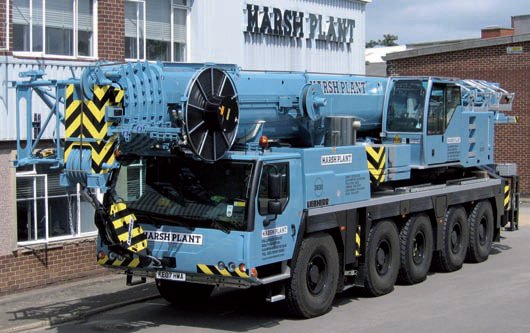Numbers never lie
12 June 2013Fleet management systems are providing companies with new levels of detailed data, however determining what the exact effect is on a company’s profit margin can be difficult. Geoffrey Marsh of Marsh Plant Hire believes that he’s discovered a way to do it. Zak Garner-Purkis paid the firm a visit in order to find out more.
"The key is turning human activity into numbers, and then comparing data correctly, and it's a real skill to interpret this", says Geoffrey Marsh, Marsh Plant's chairman, explaining how his business has used a range of data to make its hire fleet as profitable as possible. Marsh is the driving force behind the firm, which he took over from his father as managing director in 1967. Earlier this year, Marsh Plant Hire celebrated 50 years at its Head Office in New Lane, Havant, Southern England.
However, rather than dwelling on its past glories Marsh Plant is looking for new methods to assist the process of turning human activity into useful data. Recently, the company has been using telematics computer software, to help them identify the most and least profitable machines in its fleet.
The Skyline Telematics software from Enigma Systems lets the rental firm monitor its cranes in a range of different ways. The first and most noticeable feature of the system is the security it provides: each machine requires a code to operate, and an engine cannot be switched on without the user possessing the correct number. This means no machine can be used without permission being given beforehand and that management is always in control of who is accessing the machines. There are two types of code, one for workshop staff, transport drivers and operators, and the other for customers.
The software eradicates individuals taking advantage of potential loopholes in the rental market, such as hiring a machine on a Friday exploiting the fact it may not be returned until the Monday and then claiming they haven't used the machine over the weekend. The system not only reveals whether they have or not, it also allows a remote administrator to cut power to the engine and stop the firm using the machine, as system known as e-lock immobilisation.
The system is protected using administrator privileges, meaning that if depot code is compromised it can easily be changed. SMS and email alerts can be linked to a mobile device, so the administrator is alerted every time a vehicle is used or something unusual happens. Machines can be zoned for specific function so anything that is outside the normal conditions is also identified quickly.
Vehicles are tracked using the software, with reports on the machine's usage and current location available at the click of a button. The whole fleet is listed on the system, so any unit can be selected and its activity viewed. Engine data is recorded from the moment the ignition is switched on. All the commercial vehicles contained within the system list the bits of kit the machine possesses, so everything can be accounted for. The system works with Google maps allowing exact locations to be viewed in map or satellite mode. The street view option allows operators to look at job sites and see what arrangements need to be made or if the task is possible.
Marsh Plant can use the software as a management tool to view and assess work done by employees. However, another aspect of the program, which Marsh said had proved beneficial, was for tax returns. It enabled the company to use data in order to prove vehicles were being used for business.
Where Marsh Plant then goes further than many other firms in its use of the data generated by the telematic systems, is in how they it extracts the relevant information and use it to assess the profitability of its fleet. Using a specific method the company compiles the usage data from Skyline with other information such as detailed maintenance reports. These form part of what Geoffrey Marsh describes as a "unique process", in which daily utilisation is logged and compiled into a weekly form. Any changes can then be monitored.
This is compiled on a monthly basis, and is discussed at an endof- month meeting. Vehicles are assessed and if required analysed on a whole of life basis. Following the recession Marsh Plant set specific targets that determined whether a machine was earning enough money. They were defined as follows: any vehicles that were below 60% hours worked are marked red, which is seen as unacceptable, those above 60% are considered satisfactory and are marked yellow, whilst cranes at 70% or higher are viewed as providing a positive return and are marked green.
It becomes clear fairly quickly to the management at Marsh Plant the vehicles that need to be monitored most carefully. Cranes that are sat in the yard not working or machines which have large maintenance costs can be identified. Cranes considered "high-cost" aren't invested in again and are gradually phased out of the fleet. There are other benefits too: during negotiations with manufacturers the data gathered on maintenance in particular can be used to make a point about a crane's performance. The decision can also be made not to buy from a particular manufacturer based on rising maintenance costs.
Geoffrey Marsh believes his methods are cost effective too, not requiring large numbers of employees: "This isn't a large operation with many members of staff working on the figures, this is a minimal set up with a few employees inputting data and then giving management the opportunity to analyse the right information." If Marsh Plant can prove consistently that telematics and fleet management software significantly improve profitability, it might not be too long before it becomes an industry standard.
Fleet management case study
